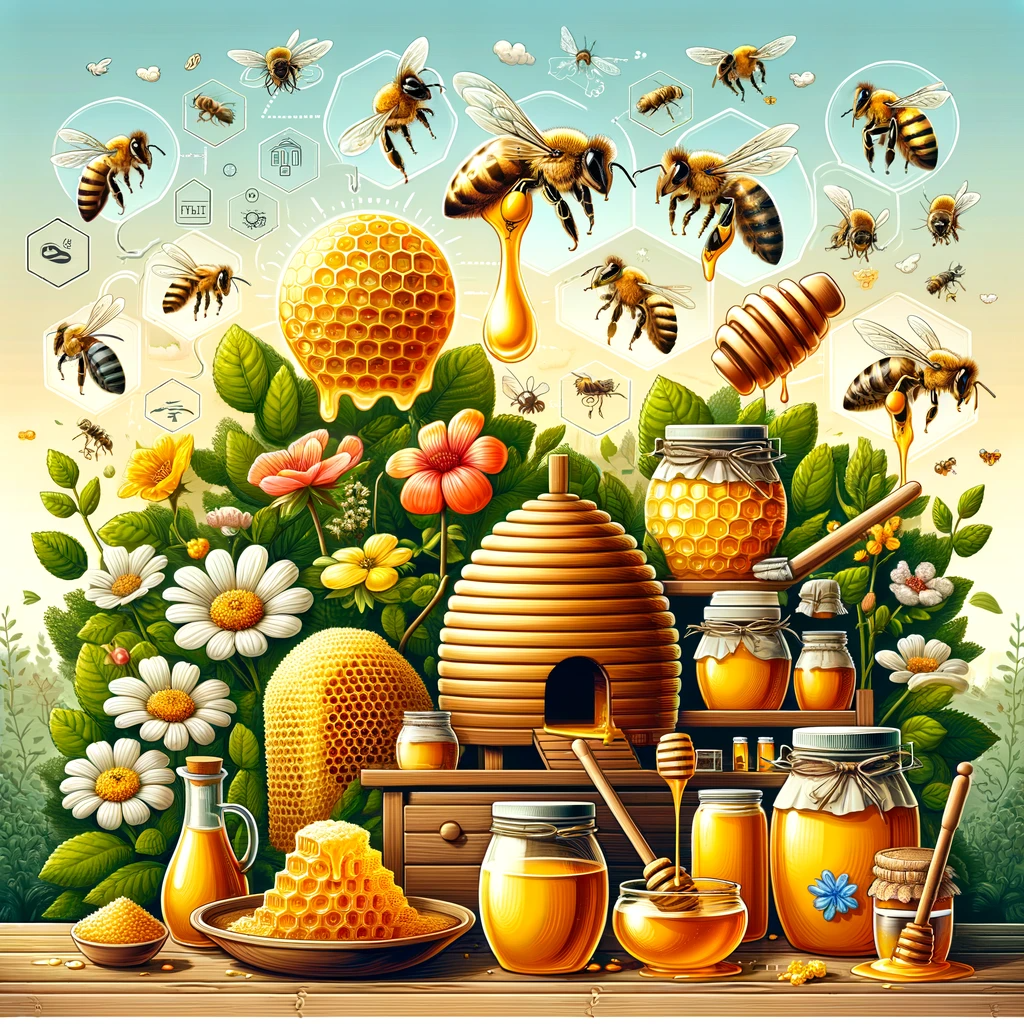In the world of natural sweetness, honey reigns supreme. But have you ever wondered how this golden nectar is produced? The answer lies in the remarkable work of honey bees. In this article, we will delve deep into the intricate process of honey production and explore the vital role bees play in this delectable journey.
The Bees Behind the Magic
1. Pollination
- Pollinators Extraordinaire: Honey bees are prolific pollinators, and their primary role is to transfer pollen from one flower to another. This process is essential for the fertilization of plants, ensuring the production of fruits and seeds.
- Diverse Diet: Honey bees collect nectar from various flowering plants, which gives honey its unique flavor and aroma. This diversity in their diet contributes to the wide range of honey varieties available.
2. Nectar Collection
- Foraging Flights: Worker bees embark on foraging flights in search of nectar-rich flowers. They can travel several miles from their hive in search of these vital resources.
- Nectar Harvesting: Once a bee finds a suitable flower, it collects nectar using its proboscis, a specialized tongue-like structure. Nectar is stored in its honey stomach, a separate pouch in its abdomen.
3. Honeydew Collection
- Alternative Source: In addition to nectar, some honey bee species collect honeydew. Honeydew is a sugary secretion produced by aphids and other insects that feed on plant sap. Bees gather honeydew to supplement their nectar intake.
The Honey-Making Process
1. Enzymatic Transformation
- Nectar Processing: When a bee returns to the hive, it regurgitates the collected nectar into the mouth of another worker bee. This process, known as trophallaxis, allows the enzymes in the bee’s stomach to begin breaking down the complex sugars in the nectar.
- Conversion to Honey: The nectar is then repeatedly regurgitated and mixed with enzymes, transforming it into honey. The bees fan the mixture with their wings to reduce its water content, creating the thick, viscous consistency we associate with honey.
2. Storage in Honeycomb Cells
- Hexagonal Wonder: Honey bees store honey in hexagonal cells made from beeswax. These cells serve as both storage containers and incubators for young bees.
- Precision Engineering: The bees work together with remarkable precision to fill each cell with honey and cap it with wax once the moisture content reaches the desired level.
3. Long-Term Preservation
- Natural Preservative: Honey’s low water content, high acidity, and the presence of hydrogen peroxide make it a natural preservative. It can remain edible for thousands of years, as evidenced by honey found in ancient Egyptian tombs.
- Energy Source: Honey serves as the primary energy source for the colony during the winter months when foraging becomes scarce.
Harvesting Honey: A Delicate Balance
1. Beekeeping Practices
- Harvesting Ethics: Ethical beekeepers follow responsible practices to ensure that they do not harm the bees or deplete their honey stores excessively.
- Timing Matters: Harvesting honey at the right time ensures that bees have ample reserves for winter and other seasons when food sources may be limited.
2. Sustainable Beekeeping
- Bee Health: Maintaining the health and well-being of bee colonies is paramount to sustainable honey production. This includes managing diseases, pests, and providing suitable hive conditions.
- Conservation Efforts: Supporting bee conservation efforts and planting bee-friendly flowers can help ensure a steady supply of nectar for these invaluable pollinators.
Conclusion: The Sweet Symphony of Nature
In the grand symphony of nature, honey bees are the virtuoso players responsible for the creation of honey, a delicious gift to humankind. Their role in pollination and honey production not only sustains the ecosystems they inhabit but also provides us with a sweet taste of nature’s bounty. It is essential that we continue to protect and support these remarkable creatures for the sake of our own food security and the preservation of the natural world. So, the next time you savor a spoonful of honey, remember to thank the tiny, industrious bees that made it possible.
